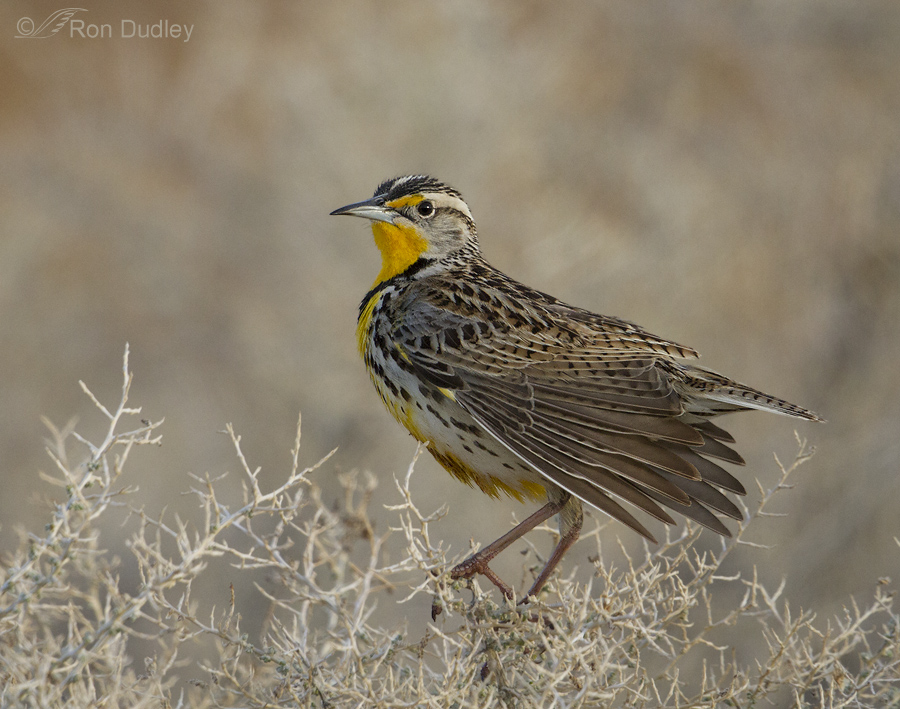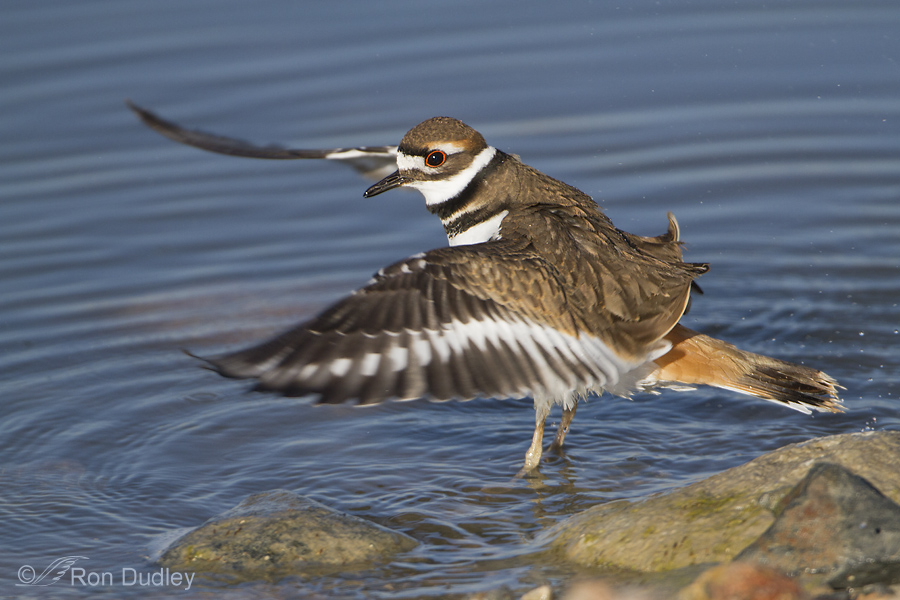Tag: bathing
Killdeer – An Icy Bath And A Wing-flap
Bathing Willet Adult
Several weeks ago I found this adult Willet near the shore of a lake in Beaverhead County in sw Montana. Most of the shorebirds in this remote area of the state aren’t used to people so they’re difficult to approach but this single adult (and a couple of juveniles – likely the offspring of this bird) were very cooperative – which makes me speculate that this adult had migrated from an area where it had become accustomed to humans. 1/2000, f/7.1, ISO 400, 500 f/4 It spent quite a while feeding on aquatic insects and crustaceans. 1/2500, f/7.1, ISO 400, 500 f/4 There was a variable breeze blowing and in many of these shots and I liked the effect it had on the water surface. 1/2000, f/7.1, ISO 400, 500 f/4 Then the Willet began to bathe… 1/2000, f/7.1, ISO 400, 500 f/4 and occasionally would even give me direct eye contact. 1/2000, f/7.1, ISO 400, 500 f/4 As it completed its bath it did a few wing flaps to get rid of some of the water. 1/2500, f/7.1, ISO 400, 500 f/4 And then a vigorous shake to help dry and rearrange the feathers. 1/2500, f/7.1, ISO 400, 500 f/4 Then of course there was the post-bath preening. 1/2000, f/7.1, ISO 400, 500 f/4 And finally a nice wing stretch to complete the bathing ritual. The wing movement scared up some flying insects from the foreground vegetation. Willets appear to be pretty much “plain brown birds” until they…
Bathing Killdeer
Two days ago we woke up to a cloudy morning so we put our shooting plans on hold for the day but soon the clouds began to clear from the south so we decided at the last minute to head for Farmington Bay which is not only a shorter drive but it’s further south than Antelope Island, which gave us a better chance for some decent and relatively early light. I’m glad we did – if for no other reason than this cooperative Killdeer. 1/5000, f/5.6, ISO 500, 500 f/4, 1.4 tc The Killdeer was a little wary of us as we approached but as soon as I turned the engine off it settled right down for its morning bath. A note about shutter speed for these shots: When birds are bathin’ and shakin’ the feather movement is very fast and since I had plenty of light and wanted to freeze that movement I made the conscious decision to go for a minimum shutter speed of 1/3200. I think it worked out pretty well to stop the motion of both the feathers and the water spray. All images are in the sequence that they occurred. 1/4000, f/5.6, ISO 500, 500 f/4, 1.4 tc First the Killdeer seemed to be testing the water temperature before proceeding. 1/3200, f/7.1, ISO 500, 500 f/4, 1.4 tc Since the bath water seemed about right the bird began to bathe with gusto. 1/4000, f/7.1, ISO 500, 500 f/4, 1.4 tc For these first few shots the Killdeer…
Bathing Willet
Last summer at Red Rock Lakes National Wildlife Refuge I slowly approached this bathing Willet in my pickup, fully expecting the bird to either fly off or wander further away in the shallow water of Lower Red Rock Lake. 1/2000, f/8, ISO 400, 500 f/4, 1.4 tc It eyed me warily until I had turned off the engine… 1/2000, f/8, ISO 400, 500 f/4, 1.4 tc but it was so intent on its bath that it quickly went back to minding its hygiene. 1/3200, f/7.1, ISO 400, 500 f/4, 1.4 tc For this shot the Willet turned its back on me a little but I liked the shot because it shows the furious action at the rear of the bird. 1/2500, f/7.1, ISO 400, 500 f/4, 1.4 tc With water and feathers flying everywhere… 1/3200, f/7.1, ISO 400, 500 f/4, 1.4 tc it finally gave me a bit of a head turn again as it spread and raised its tail feathers for a good cleaning. 1/3200, f/7.1, ISO 400, 500 f/4 Then it hopped up on the shore for a vigorous shake. 1/4000, f/7.1, ISO 400, 500 f/4 By this time it had approached me so closely that I had to take off my teleconverter but even so I was tight enough on the bird that I wasn’t able to get the composition I would have preferred for these last three shots. 1/3200, f/7.1, ISO 400,…
White-crowned Sparrow Bathing in a Lilac Bush
I have a serious case of unrequited spring fever. It’s been a long and dreary winter and it’s not over yet so when I stumbled across these images from last spring a few days ago I decided they were worthy of a post. Canon 7D, 1.4 tc, tripod, 1/2500, f/8, ISO 640 It was just after a spring rain in May last year when the sun came out and I noticed this male White-crowned Sparrow fluttering around in my neighbor’s lilac bush so I quickly grabbed my gear and started firing away. Canon 7D, 1.4 tc, tripod, 1/3200, f/8, ISO 640 The sparrow seemed so ecstatic over his bath that he let me get close and pretty much ignored me. Canon 7D, 1.4 tc, tripod, 1/2500, f/8, ISO 640 The leaves and especially the flowers were loaded with water and the sparrow was taking full advantage of the situation. Canon 7D, 1.4 tc, tripod, 1/2000, f/8, ISO 640 And the ecstasy continues. I guess there’s just something special about bathing in lilac water… Canon 7D, 1.4 tc, tripod, 1/2000, f/8, ISO 640 Canon 7D, 1.4 tc, tripod, 1/2000, f/8, ISO 640 Canon 7D, 1.4 tc, tripod, 1/2500, f/8, ISO 640 Canon 7D, 1.4 tc, tripod, 1/2500, f/8, ISO 640 Some of these photos are far from perfect – the light was harsh, the bird was side-lit, I often didn’t get a catch light in the eye and the contrast was high, especially…
Bathing Cinnamon Teal/Green-winged Teal hybrid
Though bathing is a common activity for waterfowl it can make for some interesting photographs. I found this bird at Bear River Migratory Bird Refuge at the end of May last year. Cinnamon Teal x Green-winged Teal Hybrid male While I was processing some of the images I noticed the unusual crescent-shaped marking running through the eye to the back of the head that is typical of the Green-winged Teal. I asked several very knowledgeable birders about this bird and they think this is a CT/GWT hybrid, which apparently is quite unusual. Red eye looking at you through a layer of water While bathing he would repeatedly dunk his head and shoulders under water and then lift them up, which would roll water over its back and wings. An interesting process to watch and photograph at such close range. Here he’s looking at me through a layer of water over his head and eye as he brings his head out of the water. Forcing water over the back Here’s the water on the back. Washing the back feathers Then he would shake vigorously which would wash the back and upper wing feathers and send water droplets flying. Rearranging the wing feathers After so much vigorous activity the feathers, particularly those in the wing, needed rearranging to put them in their proper places. Preening after the bath Then came the preening. Lots of it. Here he is grooming individual breast/lower neck feathers. After the bath And here…
Burrowing Owls – Clowns of the Bird World
Of the many bird species I’ve photographed, Burrowing Owls by far show the most “personality”. Their repertoire of silly antics, funny poses, stretches, yawns and grooming behaviors are a photographers dream. And once they feel comfortable in your presence they will often allow you to photograph them for a very long time without flying off or retreating to their burrow. But you have to find them first… The antics of juveniles are even more exaggerated than those of adults. Most of the images I will present here are of juveniles. Some of the shots were taken in less than ideal conditions (harsh light, shadows, clutter) but I think they illustrate the goofball personalities of these birds well. Giving the photographer a suspicious look It’s difficult to resist being anthropomorphic (ascribing human emotion or motivation to non-human species) when it comes to Burrowing Owls so I won’t even try. This juvenile looks very suspicious of me but in reality I suspect that it was only curious. Wing-stretch with lifted foot, or “They went that-a-way!” Topsy turvy owl Juveniles practice their parallax skills regularly. It involves bobbing and twisting their heads so their eyes can view an object (in this case me) from different positions. This allows them to better determine distance to that object. I’m sure it’s serious business for the owls but to us it can sure look silly. And adorable. Reaction to sudden and unexpected rain One sunny and hot August morning I was photographing a pair of juveniles when a single cloud passed overhead and…



